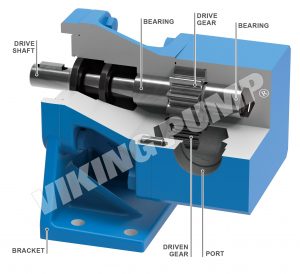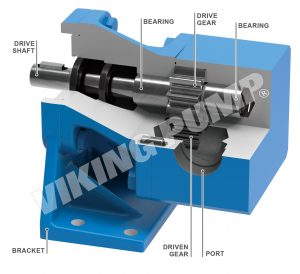
Welcome to Pye-Barker Engineered Solutions, where we bring industry-leading expertise to your operations across Georgia and Florida. As an experienced industrial equipment supplier, service provider, and engineering firm, we understand the critical role gear pumps play in the movement of various fluids. Whether you’re in the chemical, fuel, food, or manufacturing industry, gear pumps can deliver precision and reliability in fluid handling. In this article, we'll explore the distinct features, functions, and applications of external gear pumps and internal gear pumps to help you make informed decisions.

Due to their precise construction, external gear pumps are made to exact tolerances. While this precision enhances performance, it also means they’re less forgiving of particulates in the fluid. In cases where abrasive materials are present, additional filtration may be necessary to prevent wear and maintain the longevity of the pump.
External gear pumps are ideal for handling a wide range of fluids, from fuel and lube oils to chemical additives. Here’s a closer look at their common uses:
While external gear pumps excel in high-pressure, controlled environments, they may not be ideal for conditions with critical suction demands or applications with high torque requirements due to viscous fluids.
External gear pumps perform well with thin and viscous liquids alike. However, they may face challenges with volatile or thick fluids. As viscosity increases, so does the torque demand. The pump’s design is robust, but there are limitations to shaft strength under high torque.
Here’s a scorecard of external gear pumps based on fluid handling:
| Property | Abrasives | Thin Liquids | Viscous Liquids | Solids | Dry Prime | Differential Pressure |
|---|---|---|---|---|---|---|
| External Gear Pump | Poor | Good | Good | Poor | Average | Excellent |
Unlike their external counterparts, internal gear pumps use a unique design to transport fluids through a series of stages: filling, transfer, and discharge. An internal gear pump consists of a rotor gear inside a larger ring gear, which helps achieve smooth, consistent fluid movement. This design is both compact and efficient, with only one shaft seal, making maintenance straightforward.
Internal gear pumps are incredibly versatile in handling various fluid viscosities, from thin, watery solutions to highly viscous materials like asphalt. Adjustable clearances further enhance their adaptability, allowing them to manage viscosities up to 2,000,000 SSU (Saybolt Universal Seconds). This makes internal gear pumps particularly suited for applications where both efficiency and flexibility are essential.
Internal gear pumps are employed in a wide array of industries, with some of the most common applications including:
With low shear forces and adjustable clearances, internal gear pumps maintain fluid integrity, making them perfect for handling sensitive or delicate materials.
As Georgia’s official Viking Pump distributor, Pye-Barker Engineered Solutions is proud to offer internal gear pumps renowned for their performance and durability. Here are some benefits that set internal gear pumps apart:
When selecting an internal gear pump, consider factors like fluid viscosity, operating temperature, and flow requirements to find the model best suited for your needs.
At Pye-Barker Engineered Solutions, we’ve supported industries across Georgia and Florida with high-quality equipment and expertise for nearly 80 years. As authorized distributors for Viking Pump and other leading brands, we bring a range of internal and external gear pumps tailored to diverse applications. Our team of experts provides guidance on selecting the right pump for each unique environment, ensuring that you have the most efficient and effective solution.
We supply a variety of trusted brands, including:
Choosing between an internal or external gear pump depends on several factors, such as the nature of the fluid, pressure requirements, and the specific application. Here’s a quick comparison to help you decide:
| Feature | External Gear Pump | Internal Gear Pump |
|---|---|---|
| Pressure Tolerance | High | Moderate |
| Viscosity Range | Good with thin and viscous | Excellent, up to 2,000,000 SSU |
| Maintenance Ease | Moderate | Easy |
| Typical Applications | Fuels, chemicals, hydraulics | Lubricants, food products, heat transfer |
| Operating Speed | High (1,750 - 3,450 RPM) | Variable, suitable for lower speeds |
Both pump types have distinct advantages, and our team is here to help determine the best fit for your specific needs.
If you’re ready to equip your operation with reliable, top-performing gear pumps, look no further than Pye-Barker Engineered Solutions. With nearly eight decades of experience serving Georgia and Florida, we’re committed to providing high-quality solutions tailored to your exact specifications. Contact our team today to discuss your project and discover how our internal and external gear pump solutions can optimize your operations.
Let’s work together to find the right pump for your application. Request a quote today and experience the Pye-Barker difference in industrial fluid solutions.



Notifications